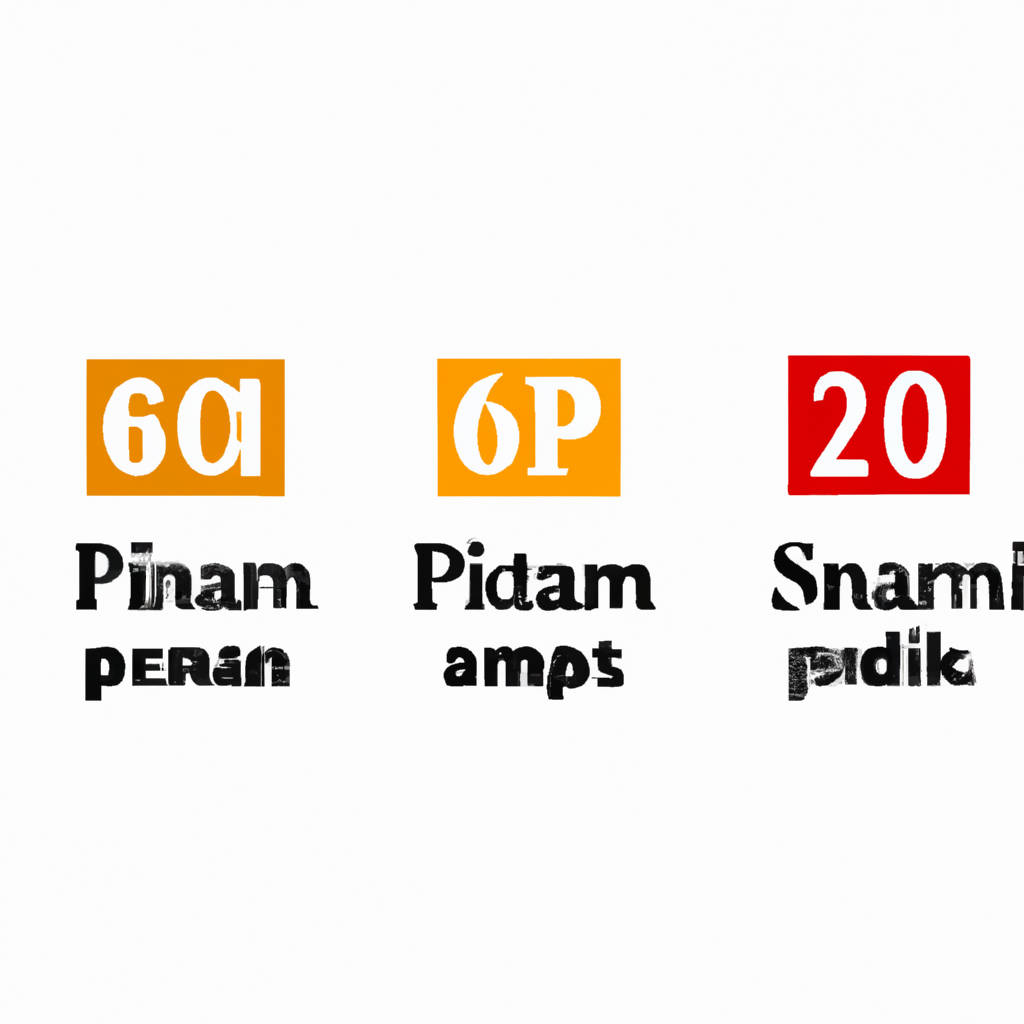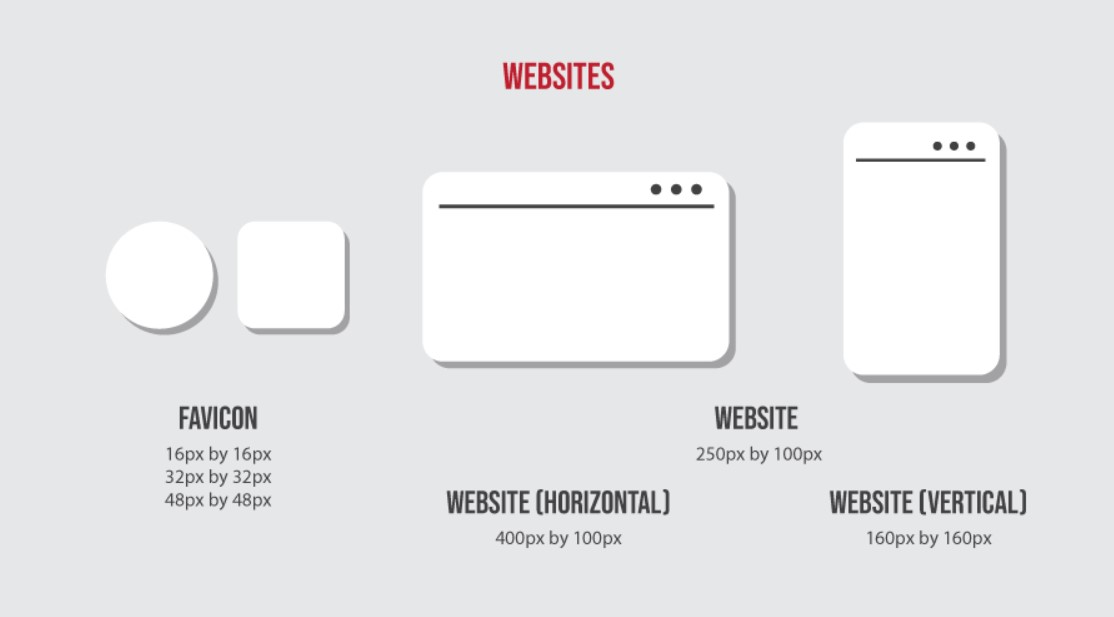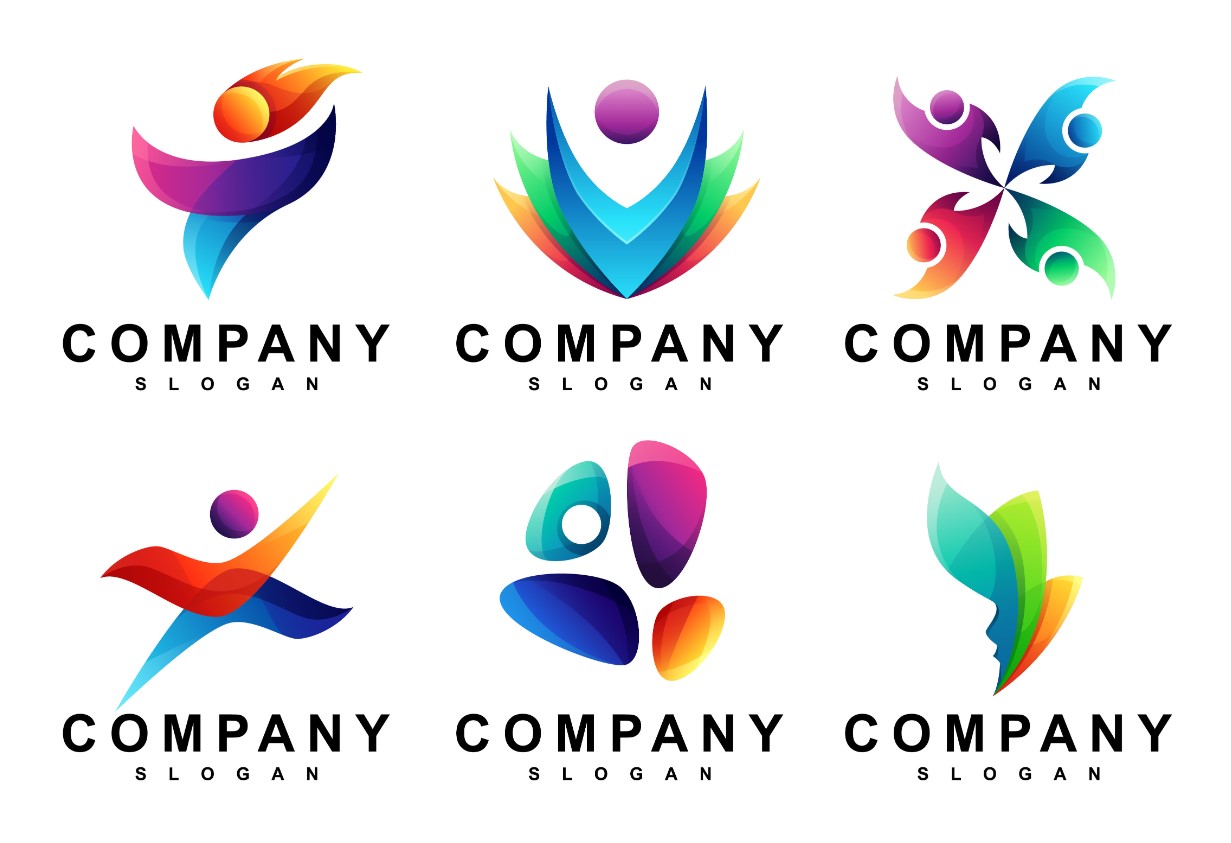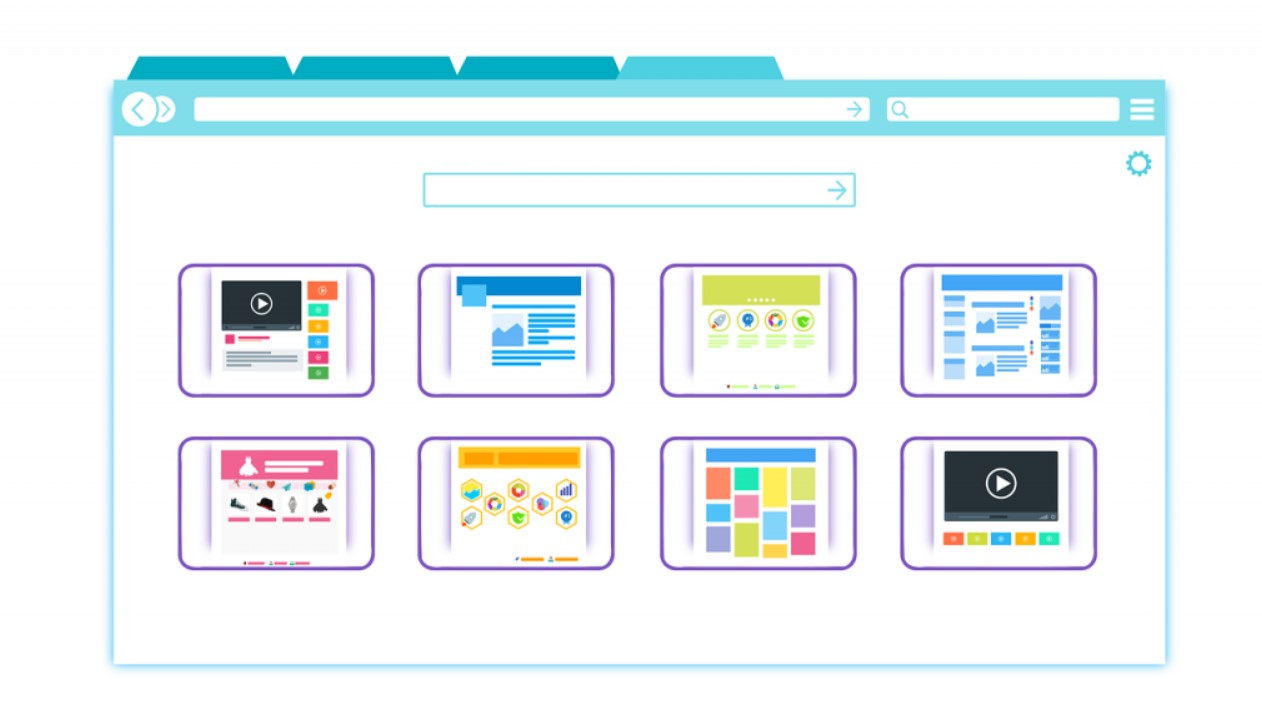Creating an impactful and memorable logo is integral to establishing a brand’s identity. However, it’s also essential to understand the optimal sizes of your logo for various platforms. For instance, on the web, smaller logo sizes typically tend to be more effective as they load quicker and are easier to view on mobile devices.
Generally, a square logo measuring 250 x 250 pixels or a rectangular one of 350 x 75 pixels are considered ideal for websites. For social media platforms, the preferred sizes vary. Facebook recommends a square logo of 180 x 180 pixels, whereas Twitter and Instagram suggest a slightly larger 400 x 400 pixels. LinkedIn, on the other hand, prefers a more rectangular 300 x 300 pixels logo. When it comes to print, the logo size should be flexible and scalable without losing its quality and integrity.
Often, vector files are used as they can be resized without any loss in quality. Depending on the specific print medium, logo sizes can range from 0.5 inches wide for business cards to 12 inches wide for large scale marketing materials. In conclusion, the optimal logo size is dependent on the platform it is being used for and should be adaptable across all mediums to maintain consistency in brand representation.

Ideal Logo Practices
Ideal logo practices involve creating a design that is not just visually appealing, but also communicates the essence of a brand efficiently. The first important consideration is simplicity. A complex design might be intriguing, but it could also confuse the audience, making it hard for them to remember. A simple, clean design with a limited color palette can be more effective in grabbing attention and enhancing recall.
Another crucial aspect of logo design is uniqueness. A logo should set a brand apart from its competitors. It should be original and not resemble any existing logo – this is not only to avoid confusion among consumers, but also to respect the intellectual property rights of other companies.
Scalability is also key. An ideal logo should maintain its clarity and impact whether it’s on a tiny business card or a massive billboard. This means avoiding intricate details that might get lost when the logo is resized.
Lastly, the logo design should be timeless. While it’s important to keep current design trends in mind, the logo shouldn’t be so trendy that it will look outdated in a few years. It should be able to stand the test of time and remain effective for many years to come.
In addition, it’s important to consider the relevance of the logo to the brand’s industry and target audience. For instance, a playful, colorful logo might work well for a children’s brand, but not for a serious corporate entity.
Lastly, it’s beneficial to test the logo with different audiences before finalizing it. This can help ensure that it resonates with the intended audience and achieves the desired impact.
In sum, ideal logo practices involve creating a simple, unique, scalable, and timeless design that effectively communicates a brand’s essence to its target audience.
Trim Excess Details
Trimming excess details refers to the process of eliminating unnecessary or redundant information from your work. This concept is highly significant in various domains such as writing, designing, or planning. The purpose is to create a clear, concise, and focused piece that effectively communicates your message to the audience. In writing, for instance, it involves removing superflacious descriptors, adjectives, or sentences that do not contribute to the overall narrative or argument.
Too much detail can confuse the reader, dilute your main points, and make the text arduous to read. Similarly, in design, removing excess elements can enhance the aesthetics and functionality of the product. The principle is to keep only what is essential, fostering ease of use and understanding for the user. In planning, it could mean eliminating unnecessary steps or processes, fostering efficiency and productivity.
The concept can also be applied to personal lifestyle, where decluttering and simplifying routines can lead to a more focused and fulfilling life. However, trimming excess details does not mean removing all details. Some details are crucial for depth and clarity. The challenge is to discern what is necessary and what is not. This requires a keen eye, sound judgment, and sometimes, the courage to let go. Remember, less is often more.

Offer Variations
Offer variations refer to the different options or alternatives that a business can present to its customers. It’s an important strategy in marketing and sales that helps companies cater to a wider range of customer needs and preferences. This strategy can be applied in numerous ways, depending on the type of product or service being offered. For instance, for a product-based business, offer variations could mean offering the same product in different colors, sizes, or packages. A service-based business, on the other hand, might present different levels of service or various bundles of services.
Offer variations not only enrich the customer’s shopping experience but also provide the business with valuable data about customer behavior and preference. A business can gauge the popularity of each variation and adjust their marketing strategies or product development accordingly. Moreover, it opens up opportunities for upselling and cross-selling, thereby increasing the potential for revenue growth.
However, it’s essential to strike a balance when implementing offer variations. Offering too many options can overwhelm customers and lead to decision paralysis, while too few may not satisfy the diverse needs of the audience. Therefore, businesses should carefully research and analyze their target market’s needs and preferences before deciding on the number and type of offer variations. Additionally, presenting these variations in a clear, understandable manner is also crucial to avoid confusion and ensure customers can make informed decisions.
Overall, offer variations play a pivotal role in enhancing customer satisfaction, driving sales, and fostering business growth.
Choose Correct Formats
Choosing correct formats is essential for various reasons. It is crucial for maintaining consistency and uniformity in professional environments, especially in business and academic spheres. This can be in the form of document formatting, data presentation, or even communication modes. For example, when presenting a research paper, adhering to a specific format such as APA or MLA ensures the information is organized in a manner that is universally recognized and easily digestible.
Similarly, in business communication, following a specific email format enhances clarity and reduces the chances of miscommunication. Moreover, correct formats are integral in the field of IT, where data must be stored and transferred in specific formats to maintain its integrity and usability. The choice of format also significantly influences the quality of the output in digital media. For instance, JPEG and PNG are optimal for image compression, while raw data is preferred for high-quality prints.
As such, understanding and choosing the correct formats is crucial for efficiency, comprehension, and quality control. It is a skill that requires meticulous attention to detail and an understanding of the underlying principles that govern the specific domain. Hence, it’s always advisable to invest time and effort in learning about the appropriate formats for different contexts and purposes.

Begin With Larger Versions
Starting with larger versions can be an advantageous approach in numerous industries and professions. For instance, in the field of art and design, artists often start with a larger, broader sketch before refining the details. This not only allows the artist to focus on the overall structure and composition but also helps in identifying potential improvements early in the process.
Similarly, in the technology sector, developers frequently commence with a broader framework or a larger prototype before refining it into the final product. This approach, often termed as the Minimum Viable Product (MVP) strategy in the tech world, helps in testing the feasibility and acceptability of the product in the market at an early stage. Even in the culinary world, chefs commonly start with larger portions of ingredients when experimenting with new recipes. It’s easier to adjust the quantities downwards rather than upwards without risking the balance of flavors.
Hence, starting with larger versions isn’t just about size or quantity, but it’s more about having a broader perspective, a wider canvas to work upon, and a greater room for experimentation, adjustment, and improvement. Whether you’re a designer, a developer, a chef, or involved in any other field, starting with larger versions can be a strategic move that can save time, resources, and effort, and can lead to better outcomes.
Logo Dimensions: Web, Social, Print
Logo dimensions are a critical aspect of brand representation across various platforms such as websites, social media, and print. These dimensions often vary according to the platform on which they are displayed. For web usage, logos need to be clear and sharp, even at small sizes. This is due to the wide range of screen resolutions and devices used to view websites. A rule of thumb is to use a logo size of around 250 x 100 pixels for optimal viewing on most websites, but this can vary depending on the design and layout of the site.
When it comes to social media platforms, each has its unique specifications for logo dimensions. For instance, Facebook recommends a profile picture size of 170×170 pixels on computers and 128×128 pixels on smartphones. Instagram, on the other hand, prefers a square profile picture with dimensions of 110×110 pixels. Twitter suggests a 400×400 pixel profile photo. These dimensions ensure that logos maintain their quality across different devices and resolutions.
In contrast, print media requires higher resolution logos to ensure clarity and quality when printed. It’s generally recommended to use vector-based logos for print, as they can be scaled without losing quality. A typical size for a printed logo can range from 1 inch to 12 inches depending on the medium it’s printed on, such as business cards or banners.
In conclusion, understanding the different logo dimensions for web, social media, and print is crucial for maintaining brand consistency across various platforms. Always consider the platform’s specific requirements and the viewing device’s resolution to ensure that your logo is always displayed at its best.
Website & App Logos
Website and App logos play a pivotal role in the digital world, offering a visual identity to businesses and organizations. These logos are often the first impression a user has of a company, meaning that they need to be visually appealing and accurately represent the business or application they are attached to. They often incorporate elements of a company’s branding, such as color schemes and typography, which can help to create a sense of consistency across all platforms. A well-designed logo can significantly enhance user recognition and help a business or app stand out in the competitive digital marketplace.
Logos are also important in terms of usability. For apps, a distinctive logo can make it easier for users to locate the app on their device. For websites, a logo often acts as a navigational tool, with many web designers placing it in the top left corner of every page and linking it back to the homepage. This provides a simple way for users to return to the start without having to search for a ‘home’ button.
In the era of digital marketing, logos need to be versatile to work effectively across a variety of platforms. This includes being scalable, so they can be resized for different uses without losing quality, and adaptable, so they can work in different formats and contexts. A successful website or app logo will not only strengthen a brand’s identity but also improve the overall user experience.
Navigation, Favicon, Banner, App Icon
Navigation, Favicon, Banner, and App Icon are critical components of web and app design that greatly influence user experience. Navigation refers to the system that allows users to move around a website or an application. It should be intuitive and easy to understand to ensure seamless user interaction. Favicon, on the flip side, is a small, iconic image that represents a website, typically displayed in the address bar of a browser. It aids in quick identification of a website among several open tabs.
A banner, meanwhile, is a graphical component, often placed at the top of a website, displaying the company’s name, logo, or promotional content. It can significantly affect the visual appeal and branding of the site. Lastly, an App Icon is the small, clickable image representing an application on the device screen. It serves as the first point of contact between an app and a user, hence, it needs to be attractive and representative of the app’s functionality.

Social Media Logo Sizes
Understanding social media logo sizes is crucial for businesses or individuals seeking to establish a strong online presence. Each social media platform has its unique specifications for logo sizes, which influences how your logo appears to other users. For example, Facebook requires a profile picture size of 180×180 pixels, while Twitter recommends a size of 400×400 pixels. Instagram has a circular format that requires a logo with a minimum size of 110×110 pixels. LinkedIn also uses a circular format for company logos with a recommended size of 300×300 pixels. YouTube, on the other hand, uses a square format with a recommended size of 800×800 pixels for profile images.
Adhering to these guidelines ensures that your logo maintains its clarity and visual integrity across different platforms. A logo that is too large can be cropped or distorted, losing important details in the process. On the other hand, a logo that is too small may appear pixelated or unclear, which can affect the perception of your brand. Therefore, it is essential to resize your logo to fit each platform’s requirements. This not only enhances the visibility of your brand but also contributes to a seamless user experience.
In conclusion, social media logo sizes are an essential aspect of online branding. By understanding and adhering to the specific guidelines for each platform, you can ensure that your logo effectively communicates your brand identity to your target audience.
Instagram, Facebook, YouTube, Twitter, LinkedIn, Pinterest
Instagram, Facebook, YouTube, Twitter, LinkedIn, and Pinterest are among the most popular and influential social media platforms globally. Each platform has a unique feature that sets it apart from the others. Instagram is primarily focused on sharing photos and videos, while Facebook allows users to connect with friends and share a variety of content. YouTube is a platform for sharing and viewing videos, from music clips to tutorials.
Twitter is popular for its concise posts and real-time updates, making it ideal for news and trending topics. LinkedIn is a professional networking site where users can share their work experience, seek job opportunities, and connect with other professionals in their field. Pinterest is a platform for discovering and saving creative ideas, recipes, and home decor inspirations. These platforms have revolutionized how people communicate, consume information, and express themselves, becoming integral parts of our daily lives.
Printing Logo Sizes
Printing logo sizes is an essential aspect to consider in the realm of marketing and branding. It’s crucial to ensure that the size of the logo is appropriate for the medium in which it will be used. For instance, a logo that looks perfect on a business card may lose its clarity and impact when enlarged for a billboard. Conversely, a logo designed for large-scale use may lose its details when scaled down.
Therefore, businesses should ideally have different versions of their logo to accommodate various printing needs. This includes a version for small scale use such as on stationery, another for medium-scale use like on a website, and a third for large scale use such as on banners or billboards. Furthermore, it’s worth noting that the size of a logo should be balanced with the other elements on the page. It should be large enough to grab attention, but not so large that it overwhelms the other content.
Thus, determining the appropriate logo size involves considering the medium, the balance of elements on the page, and the clarity of the logo’s design. In order to achieve this, it might be beneficial to work with a professional graphic designer who can guide you through this process and ensure that your logo works effectively at all sizes.

Resizing Your Logo: A How-To
Resizing your logo is a crucial process that ensures your brand mark fits appropriately in all platforms and mediums. To begin, you need to understand the dimensions and aspect ratio of your logo. The aspect ratio is the proportion between the width and height of your logo. Maintaining this ratio during resizing is essential to avoid distortion or stretching. The next step is to use a graphic design tool.
Tools such as Adobe Photoshop, Illustrator, or free online tools like Canva and PicResize can help you with this task. Open your logo file in the chosen tool, then find the resize option, usually under ‘Image’ or ‘Edit’ menu. Input the desired dimensions keeping in mind the aspect ratio. Preview the resized logo to ensure it still maintains its visual appeal. If you’re satisfied, save the file in a format that retains its quality, such as PNG or SVG. Remember, your logo should be clear and recognizable at any size, whether it’s on a billboard or a business card.
It’s a representation of your brand, and any alterations should still reflect your brand identity accurately. Therefore, resizing your logo should be done with care and precision. It’s advisable to have different versions of your logo, each optimized for different platforms. This way, you can ensure your logo will always look its best, regardless of where it’s displayed. If you’re not comfortable doing this yourself, you can always hire a professional graphic designer to do it for you.
